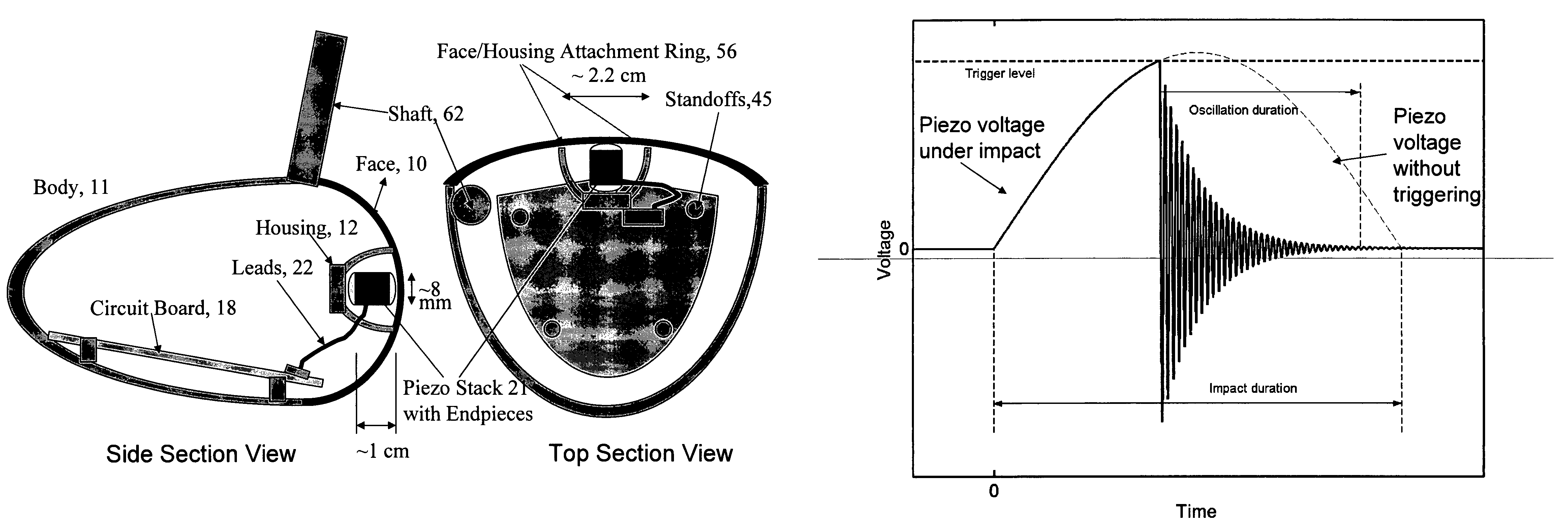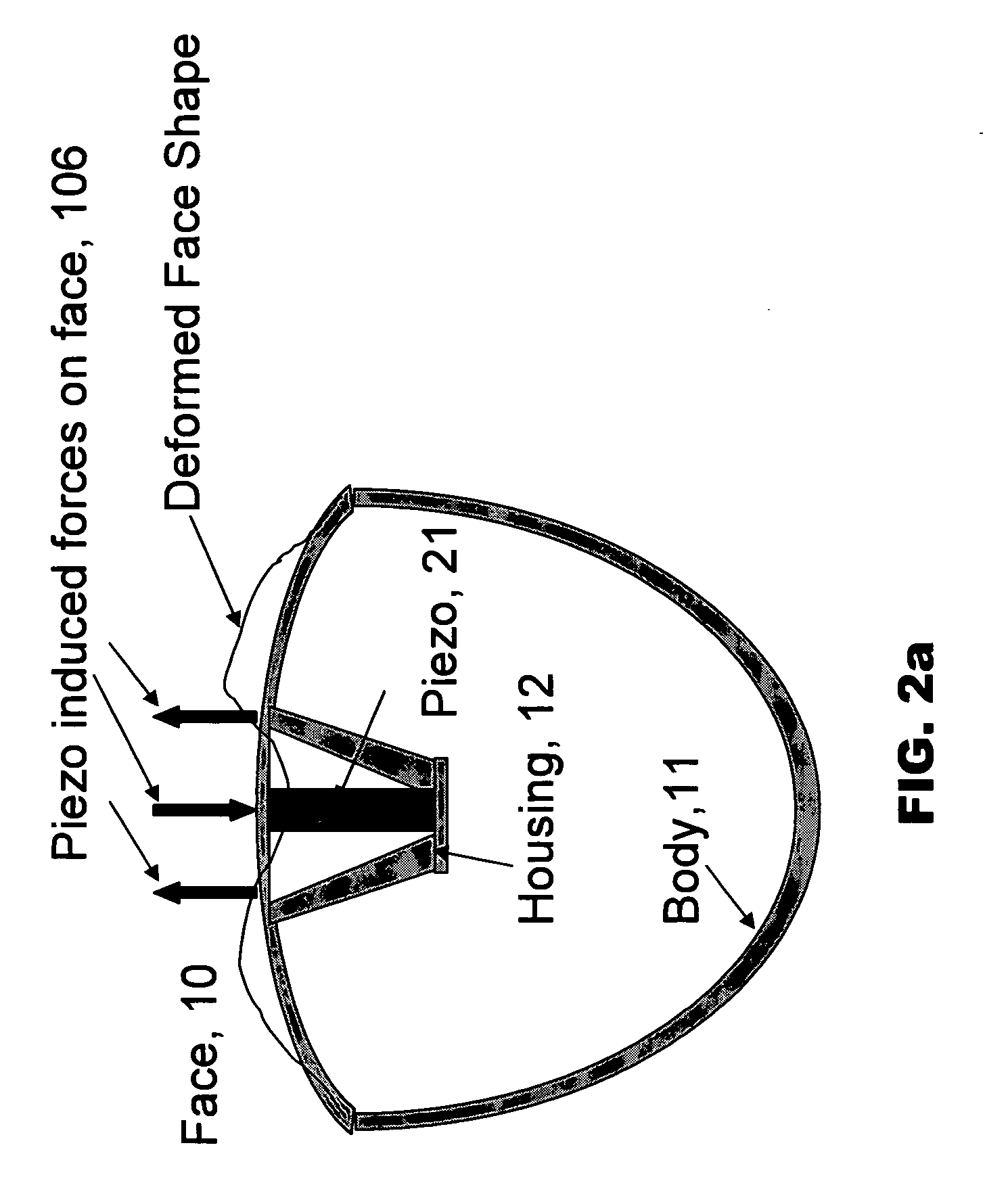Method and apparatus for active control of golf club impact
a golf club and active control technology, applied in sport apparatus, special data processing applications, instruments, etc., can solve the problems of high forces both, achieve high amplitude face oscillation, effectively reduce impact friction coefficient, and soften the face
- Summary
- Abstract
- Description
- Claims
- Application Information
AI Technical Summary
Benefits of technology
Problems solved by technology
Method used
Image
Examples
Embodiment Construction
[0046]The following description assumes that there is an understanding of the fundamentals of piezoelectric materials, operations and modes such as described in “Piezoelectric Ceramics” by Jaffe, Cook and Jaffe, Academia Press, 1971 and the references cited therein. The content of that publication is hereby incorporated herein in its entirely by reference. Another useful reference which describes the field of piezoelectric mechanics is “Piezoelectric Shells” by H. S. Tzou, Kluwer, Academic Publishers, MASS., 1993 and is also hereby incorporated herein by reference.
[0047]There are several methods of coupling actuation elements and transducers to the club face, the interaction surface between the ball and the head. The transducer can be directly coupled to 1) the face relative deformation (elastic), 2) absolute motion (inertial) using a variety of techniques or 3) relative motion between the face and the head body. Eight are described here which alternately co...
PUM
 Login to View More
Login to View More Abstract
Description
Claims
Application Information
 Login to View More
Login to View More - R&D
- Intellectual Property
- Life Sciences
- Materials
- Tech Scout
- Unparalleled Data Quality
- Higher Quality Content
- 60% Fewer Hallucinations
Browse by: Latest US Patents, China's latest patents, Technical Efficacy Thesaurus, Application Domain, Technology Topic, Popular Technical Reports.
© 2025 PatSnap. All rights reserved.Legal|Privacy policy|Modern Slavery Act Transparency Statement|Sitemap|About US| Contact US: help@patsnap.com



